KOCED Video
KOCED Video
-

About KOCED Collaboratory Management Institute(a brief summary)
In 2009, Korean government established 6 testing facilities as first step and founded KOCED CMI to operate and manage these facilities efficiently.
By utilizing these 6 testing facilities, KOCED CMI actively supports developing new technologies by providing test services relating to civil and architectural structures, foundations, construction materials, earthquakes, winds, coasts and harbors. This will eventually protects people’s lives and properties from natural disasters such as earthquakes, typhoons and tsunamis.
-
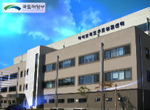
Hybrid Structural Testing Center
With the latest high-capacity hydraulic actuator and control system, the center has an ideal environment to conduct all kinds of structural tests. 5000 kilo-Newton dynamic UTM can be used not only for general compression and tensile tests but also high-speed fatigue test and small scale girder test.
Particularly, the center boasts the world's leading facilities in scale where the structural performance tests of bridge girder model up to 80 meters long and building and pier models of up to 12 meters high.
In addition, the center is actively engaged in research projects regarding seismic performance evaluation of high-rise buildings and long span bridges.
-
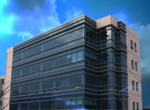
Geotechnical Centrifuge Testing Center
The geotechnical centrifuge installed at KAIST in 2008, is a large equipment ranked within world's top 10,with the platform radius of 5.0m and the maximum capacity of 240g-tons. It has introduced the nation's first bi-directional shaking table and the four-degree-of-freedom robot, enabling the acquisition of world-class infrastructure in centrifuge testing. With the basis in these excellent facilities, the Geotechnical Centrifuge Testing Center provides various services, which includes providing testing equipments, test model preparation, conducting of commissioned tests, experimental design and data analysis.
When miniature models of geotechnical systems such as dams, levees, slopes, and foundations are installed and accelerated within the geotechnical centrifuge, similar behavioral characteristics to those structures in actual sites are reflected, making it highly applicable to various problems.
Geotechnical centrifuge test is a physical model test method in geotechnical engineering for efficient evaluation of performance and safety within the laboratory setting in regards to geotechnical systems.
-
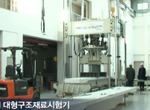
Geotechnical Centrifuge Testing Center
The large 5MN(5Meganewton) structural material testing equipment with maximum loading weight of 500 tons, and the testing space width of 3m column-to-column, height of 5m and span length of 24m is the largest of its kind in the world with its UTM format that enables automatic control of the crosshead.
The 250kN and 500 kN fatigue testing equipments can be used to evaluate the mechanical characteristics of construction materials in regards to tension, compression and fatigue testing of steel and other composite materials.
-
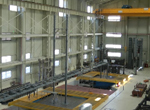
Seismic Simulation Test Center
It is an earthquake research infrastructure established with the goal of our nation's development in earthquake-resistant technology to become competitive within the global scheme and to nurture the next generation of seismic design technology professionals and experts.
We give our best effort in trying to minimize loss of lives and heavy damage of property by active engagement in seismic technology research to enhance earthquake safety and stability of social infrastructure.
The shaking table system comprised of two moveable 3 degrees of freedom tables and one fixed 6 degrees of freedom table as well as 3 large tables to enable real-time simulation of seismic waves and machine vibration.
In addition, by incorporating two of the moveable shaking tables out of the three available, testing for large structure seismic testing and vibration testing can be performed along with the testing for structures spanning 40 meters.
-
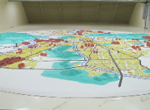
Wind Tunnel Test Center
A wind tunnel is an equipment that produces artificial wind that can be controlled, allowing for reproduction of the impact from natural disasters such as a hurricane before it actually happens.
In addition, various elements including the spread of contaminants, problems of the atmospheric environment in urban areas and wind energy can be evaluated.
The test section is 12m in width and it is possible to conduct testing in regards to the large long-span bridge planned for construction at the southwestern coast.
It applies not only to the field of civil engineering, but also to other areas such as architecture. The center has a performance track of model testing for the nation's longest spanning suspension bridges as well as cable-stayed bridges including Yi Sun-shin Bridge, Mokpo Bridge and Saechonnyun Bridge among others, and has successfully conducted wind tunnel testing for various architectural structure such as high-rise buildings, convention center, exhibition pavilion and sports stadium
-
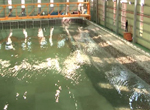
Experimental Center for Coastal & Harbor Engineering
ECCHE enables effective coastal development research with its large flow-compound wave flume.
By installing the models of breakwaters or harbors in the large wave basin and generating regular & irregular waves, research on marine and coastal hydraulic characteristics such as the coastal wave phenomenon due to structural construction can be conducted.
Various movable testing can be conducted in regards to waves, agitation within the harbor, structural stability and circumstances, coastal hydraulic characteristics testing, beach modification and erosion countermeasures among others.
Various testing for tidal power system, wave power development system and thermal effluent diffusion are available, and hydraulic model testing for farming facilities and artificial reefs will be conducted
Video
Close